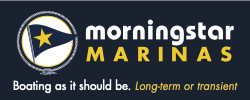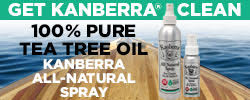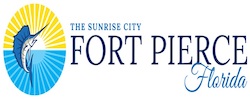TowBoatUS On Water Towing Service Opens in Sodus Bay, NY
NEWS From BoatUS
Boat Owners Association of The United States
880 S. Pickett St., Alexandria, VA 22304
FOR IMMEDIATE RELEASE
Press Contact: D. Scott Croft, 703-461-2864, SCroft@BoatUS.com

TowBoatUS Sodus Bay safely wrangles a sailboat into its slip.
New TowBoatUS On Water Towing Service Opens in Sodus Bay, NY
SODUS POINT, NY, May 11, 2015 ‘“ Capt. Tim Maxam, the new owner of TowBoatUS Sodus Bay on Lake Ontario, an on water towing and assistance service for recreational boaters, describes himself as `back to basics boating guy,’ who loves to help other boaters. Last summer he realized that opening a TowBoatUS port in his home waters in Sodus Bay was the best way to do that.
Maxam is no stranger to TowBoatUS operations. He worked as a captain for TowBoatUS Rochester for many years, including in 2012 when Jake VanReenen, the Rochester port’s owner, stationed a boat in Sodus Bay. After that boat moved back to Rochester, 35 miles to the west, Maxam did many long-distance tows. Now that he is retired, he realized he could bring TowBoatUS back to Sodus Bay full time. `VanReenen is my mentor,’ he said, `I couldn’t have set this up without his help.’
With his own towboat docked at the same marina where he and his wife, Alisa, live aboard their 36-foot Carver cruising boat, he’ll be able to answer calls from boaters in need in a matter of minutes. If someone has a mechanical breakdown, a dead battery, a soft grounding or runs out of fuel on the lake, Maxam will be there to help 24-hours a day, seven days a week.
Much like an auto club for boaters, TowBoatUS offers Unlimited on water towing plans for freshwater boaters and anglers for just $72 a year that includes BoatUS membership. Without a towing plan, boaters face costs that average $750 per incident nationally.
Maxam, who holds USCG 100-ton Master License and is an active member of the Sodus Bay Maritime Captains Association, started boating at age 11. After 38 years working in the HVAC industry, he is excited about his new retirement project. `I am happiest when I am on the water,’ he said. He spent the winter buying dewatering pumps, battery jump packs, towing lines, radios, and more to get ready to outfit his new boat.
Now everything is on the boat, a 22-foot aluminum SeaArk with a 300-horsepower inboard/outboard engine. The boat, which is painted with a distinctive white `TowBoatUS’ on the red hull, is fully equipped to render any kind of assistance. But the biggest asset is Maxam himself, a savvy boater and born troubleshooter. He remembers a frantic call from a boater who thought his craft was sinking. When Maxam got aboard to investigate the source of the in-coming water, he immediately noticed the water on the floor was warm, and realized the boat was not taking on water. A hose from the boat’s water heater had disconnected. As soon as he remedied the problem, the owner pumped out the boat and the problem was solved.
TowBoatUS Sodus Bay is based at Katlynn Harbor Marina and can be hailed on VHF channel 16 or reached by calling Maxam directly at 585-738-2495 or by calling the BoatUS toll-free 24/7 Dispatch Center at 800-391-4869, and via smartphone with the free BoatUS Towing App. To see the location on a map go to BoatUS.com/sodusbay. BoatUS is also the only towing service that offers services with both SPOT and DeLorme inReach satellite communication devices. More information can be found at BoatUS.com/towing or call 800-888-4869.
About BoatUS TowBoatUS and Vessel Assist:
Boat Owners Association of The United States (BoatUS) is the nation’s leading advocate, services and safety group for recreational boaters. We provide our over half-million members with a wide array of helpful services, including 24-hour on water towing that gets you safely home when your boat won’t, will bring you fuel if you run out, jumpstart your dead battery, or provide a gentle pull after you’ve run aground. The TowBoatUS and Vessel Assist towing fleets are the North America’s largest network of towing ports with over 300 locations and over 600 towing assistance vessels, responding to over 70,000 requests for assistance each year. See more at BoatUS.com/towing.

















 Progress continues to be made toward the opening of this new SALTY SOUTHEAST CRUISERS’ NET SPONSOR, Port City Marina, which will open for business in a few weeks along the eastern banks of the Cape Fear River, in the heart of downtown Wilmington, NC. See
Progress continues to be made toward the opening of this new SALTY SOUTHEAST CRUISERS’ NET SPONSOR, Port City Marina, which will open for business in a few weeks along the eastern banks of the Cape Fear River, in the heart of downtown Wilmington, NC. See 













Comments from Cruisers (1)
Bruce, you can contact me at richgano2gmail.com to discuss your route. What is cruising speed and draft? What navigation electronics?
Rich